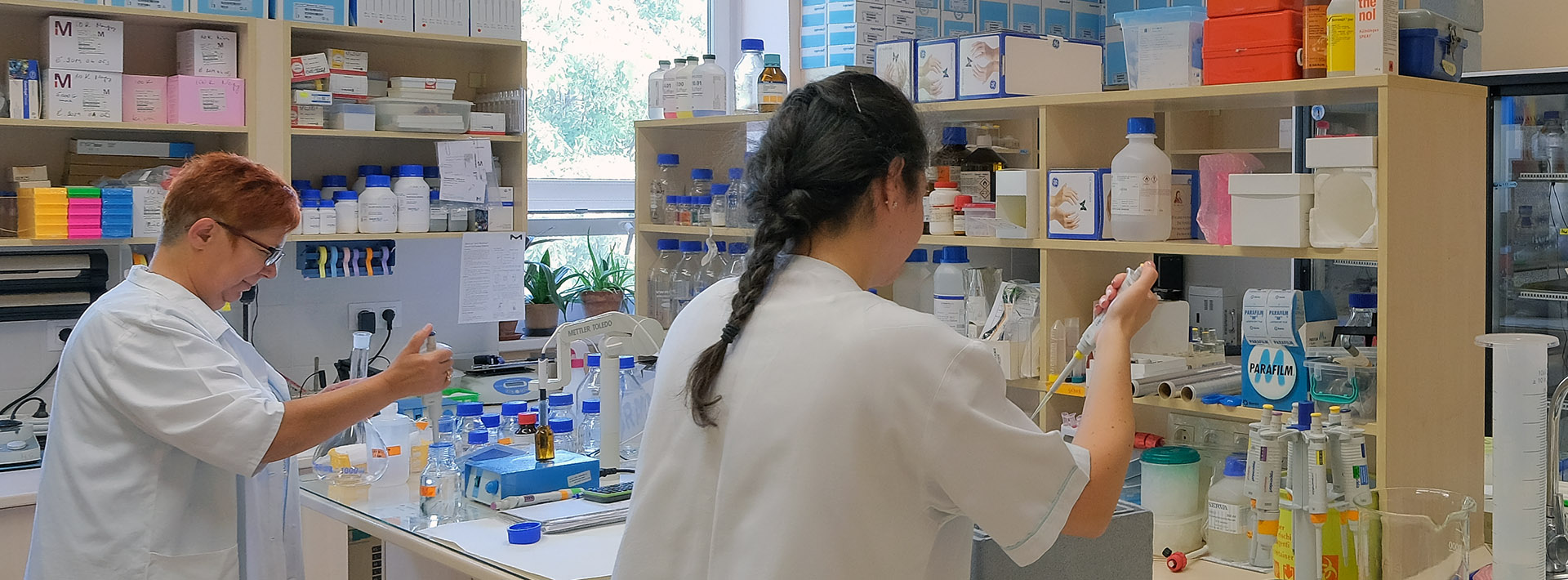Adatok
A Tantárgybejelentőben megadott hivatalos adatok az alábbi tanévre: 2024-2025
Tantárgyfelelős
-
Szeiliné Türmer Katalin Erzsébet
assistant lecturer,
Department of Biophysics
Óraszámok/félév
előadás: 12 óra
gyakorlat: 0 óra
szeminárium: 0 óra
összesen: 12 óra
Tárgyadatok
- Kód: OBF-BED-T
- 1 kredit
- Biotechnology MSc
- Optional modul
- spring
Nincs
Vizsgakurzus:Kurzus létszámkorlát
min. 5 fő – max. 40 fő
Campus kurzusként elérhető . Campus-karok: TTK
Tematika
Cells can react to external influences in many ways, this is even more so if an inherited or developed disease rewrites their entire program. From the basic morphological and functional variance of the cells, how can the deviation that is not selected and serves the disease process be determined. The changed inertia or agility, stiffness or flexibility of the cells determines whether they can adapt to the newly formed environment. Cardiovascular diseases stand out among the leading causes of death in all countries of the world. In addition to the metabolic transformation, the biomechanical characteristics that appear also increase the risk of pathological processes. An extremely important question is whether the blood cells are able to remain flexible enough so that the patient's hemodynamic parameters do not change even in a chronic condition (e.g. diabetes). The cell itself "decides" to die as a result of stress, so it continues in the direction of apoptosis or uncontrolled reproduction. Lack of apoptosis is very dangerous, as tumors can develop, which is the second most common cause of death in our country and, in the world. In addition, in the case of nerve cells and muscle cells, a very important aspect is whether they lose their plasticity with the development of inherited diseases, whether the regeneration capacity and function of the cells decreases. In each of these cases, we look for changes at the molecular level. The actin cytoskeleton is one of the most important functional and structural systems of cells, which is constantly and dynamically changing. Among the most basic cellular biological processes, maintenance and change of cell shape, cell division, transport processes within the cell, and execution of cell movements are all processes linked to actin filaments. Hundreds of proteins are involved in the organization and regulation of filaments. In the course, we dissect what molecules and how they regulate the functioning of the cell skeleton. How many effector proteins are involved in the regulation of the actin scaffolding system. With the help of the study of proteins, we also understand at the molecular level the processes that serve to build, maintain and regulate the cytoskeleton adapted to the changed functions of the cell. We review potential therapeutic targets at the actin cytoskeleton level.
Thematics:
Lecture 1: Introduction: presentation of the subject, requirements, discussion of assessment.
Lecturer: Szeiliné Dr. Türmer Katalin Erzsébet
Lecture 2: Presentation of the cytoskeleton, especially the protein actin
Lecturer: Dr. Pécsi Ildikó
Lecture 3: The role of actin-binding proteins in the cell
Lecturer: Dr. Barkó Szilvia
Lecture 4: Diabetes and the morphological changes of erythrocytes I.
Lecturer: Szeiliné Dr. Türmer Katalin Erzsébet
Lecture 5: Diabetes and the morphological changes of erythrocytes II.
Lecturer: Szeiliné Dr. Türmer Katalin Erzsébet
Lecture 6: Apoptosis or tumor
Lecturer: Szeiliné Dr. Türmer Katalin Erzsébet
Lecture 7: HPV infection and cell morphology, cervix cytology I.
Lecturer: Dr. Szatmári Dávid Zoltán
Lecture 8: HPV infection and cell morphology, cervix cytology II.
Lecturer: Dr. Szatmári Dávid Zoltán
Lecture 9: Neurodegenerative cytoskeleton I.
Lecturer: Dr. Kengyel András
Lecture 10: Neurodegenerative cytoskeleton II.
Lecturer: Dr. Gaszler Péter
Lecture 11: Myopathies
Lecturer: Dr. Huber Tamás
Lecture 12: Assessment: oral exam and presentation of submitted works.
Lecturer: Szeiliné Dr. Türmer Katalin Erzsébet
Előadások
- 1.
Introduction: presentation of the subject, requirements, discussion of assessment.
- Szeiliné Türmer Katalin Erzsébet - 2.
Presentation of the cytoskeleton, especially the protein actin
- Pécsi Ildikó - 3.
The role of actin-binding proteins in the cell
- Huberné Barkó Szilvia - 4.
Diabetes and the morphological changes of erythrocytes I.
- Szeiliné Türmer Katalin Erzsébet - 5.
Diabetes and the morphological changes of erythrocytes II.
- Szeiliné Türmer Katalin Erzsébet - 6.
Apoptosis or tumor
- Szeiliné Türmer Katalin Erzsébet - 7.
HPV infection and cell morphology, cervix cytology I.
- Szatmári Dávid Zoltán - 8.
HPV infection and cell morphology, cervix cytology II.
- Szatmári Dávid Zoltán - 9.
Neurodegenerative cytoskeleton I.
- Kengyel András Miklós - 10.
Neurodegenerative cytoskeleton II.
- Gaszler Péter - 11.
Myopathies
- Huber Tamás - 12.
Assessment: oral exam and presentation of submitted works.
- Szeiliné Türmer Katalin Erzsébet
Gyakorlatok
Szemináriumok
A tananyag elsajátításához szükséges segédanyagok
Kötelező irodalom
Materials of the lectures.
Saját oktatási anyag
PowerPoint presentation based mainly on literature and own notes.
Jegyzet
Students can make their own notes during lessons. The materials of the presentations will be handed out to the students.
Ajánlott irodalom
Books: Damjanovich-Fidy-Szöllősi: Medical biophysics
Damjanovich-Mátyus: Medical Biophysics
Fonyó: Principles of Medical Physiology
Literature
Internet
A félév elfogadásának feltételei
Oral exam or preparation of a paper to be submitted about description of a pre-defined disease. Oral examination or oral examination may be substituted by submission of a paper before of the end of the 12th week.
Félévközi ellenőrzések
Students who have attended at least 75% of the classes must submit the assignment before of the end of the 12th week.
Távolmaradás pótlásának lehetőségei
If the student has attended 75% of the lessons, he/she does not need to make up the lessons.
Vizsgakérdések
1. Introduction to the actin cytoskeleton
2. The role of actin-binding proteins in the cell
3. Characterisation of human erythrocytes, their role
4. Diabetes and factors involved in its development
5. Apoptosis
6. HPV infection and factors involved
7. Neurodegenerative diseases (discussed in the lecture)
8. Presentation of the myopathies (discussed in the lecture)
Vizsgáztatók
- Szeiliné Türmer Katalin Erzsébet
